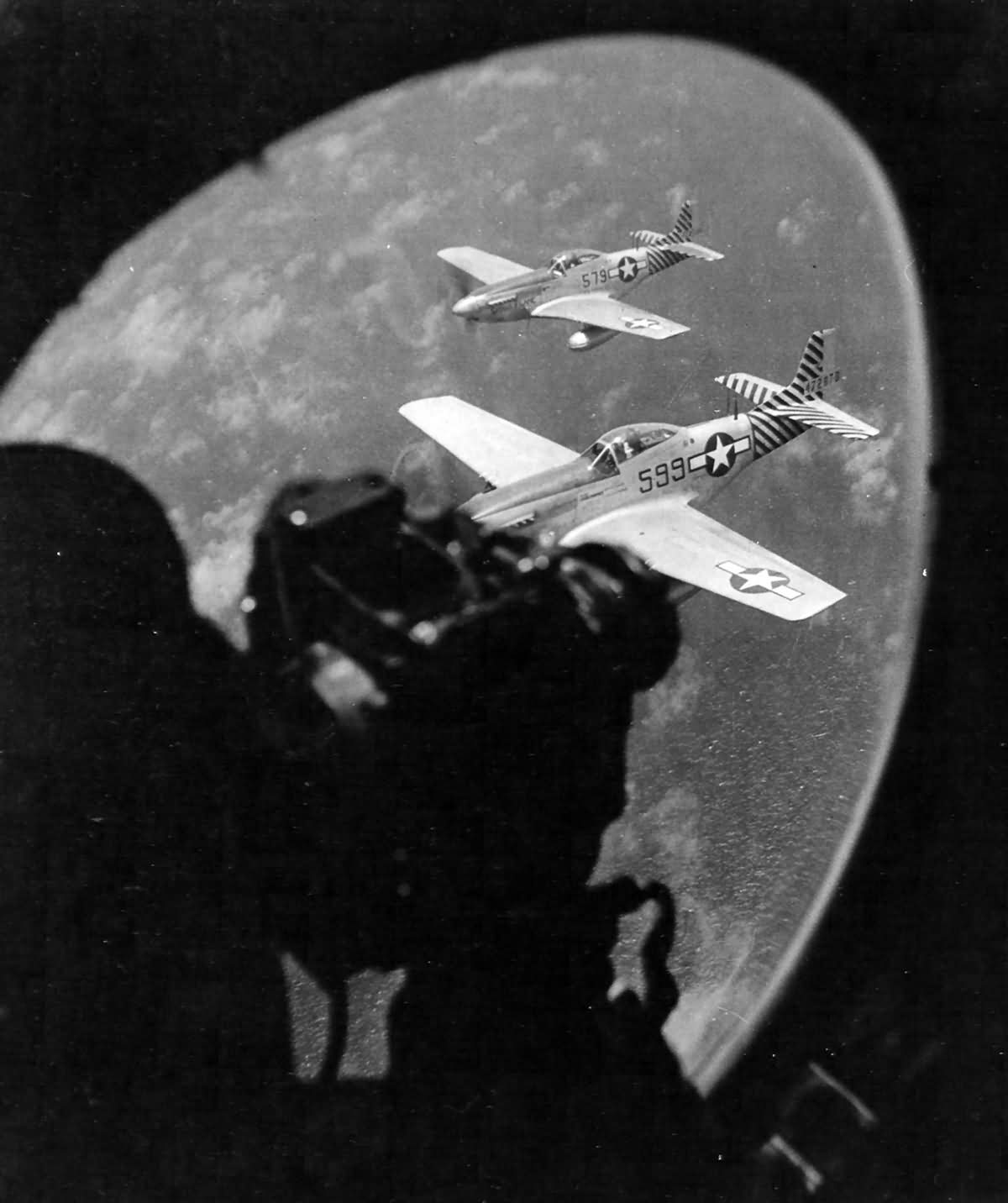Challenges for P-51 Fighter Pilots Escorting B-29s
Escorting B-29 bombers over Japan presented numerous challenges for USAAF fighter pilots, demanding a high level of skill, endurance, and adaptability. The challenges faced during these missions were due to the long distances involved, logistical constraints of operating from a forward base, unique weather conditions over Japan, and the persistent, though diminishing, threat of Japanese air attacks.
Distance and Logistics: A Grueling Commute
The sheer distance between Iwo Jima, the primary fighter base, and the targets in Japan posed a significant logistical hurdle. USAAF fighter pilots, typically flying P-51D Mustangs, faced a 1,500-mile round trip, the majority of which was over water. This meant spending several hours in the cramped cockpit of a single-engine fighter, with limited opportunities for relief or course correction.
- Navigation Challenges: Navigating over vast stretches of the Pacific Ocean, with few landmarks and limited radio communication, demanded exceptional navigational skills. To simplify navigation, B-29s often served as “mother ships” for the fighters, leading the way to the target area.
- Endurance: These extended missions tested the limits of both the aircraft and the pilots. P-51s, while equipped with long-range fuel tanks, still operated near the edge of their range. This required careful fuel management and left little margin for error.
- Mental Strain: The psychological pressure of flying over water, knowing that any mechanical issue or navigational error could result in a forced landing with limited chance of rescue, added to the strain on the pilots.
Weather: A Fickle and Formidable Foe
The skies over Japan presented their own set of challenges, particularly during the winter months. The discovery of the jet stream, a high-altitude band of strong winds, initially baffled USAAF intelligence. These winds, reaching speeds of up to 140 mph, disrupted bomber formations and made precision bombing extremely difficult.
- Turbulence and Formation Flying: Fighter pilots, flying in close proximity to the bombers, also had to contend with the turbulence created by the jet stream. This made formation flying more demanding and increased the risk of collisions.
- Cloud Cover: Cloud cover over Japan as a hindrance to both bombing and interception efforts. Low clouds could obscure targets, forcing B-29s to rely on radar bombing, which was less accurate. Thick cloud layers could also conceal Japanese fighters, making it difficult for the escorting P-51s to detect and engage them.
- Iwo Jima Weather: Ironically, Iwo Jima itself was often shrouded in clouds due to ground heat and sulfur in the air, making takeoffs and landings more hazardous for the P-51 pilots.
Japanese Interception: A Persistent, Though Diminishing Threat
While fighter escorts significantly reduced the threat posed by Japanese interceptors, they did not eliminate it entirely. Japanese pilots, increasingly desperate and facing a dwindling pool of experienced personnel and aircraft, continued to attack B-29 formations, employing tactics designed to overcome their technological disadvantage.
- Head-On Attacks: Japanese fighters, often stripped down to improve their climb rate, favored high-speed head-on attacks, aiming for the vulnerable cockpit area of the B-29. This tactic maximized their limited firepower and minimized their exposure to the B-29’s defensive guns. However, it required precise timing and marksmanship, as the closing speeds left little room for error.
- Ramming Tactics: The use of ramming tactics, while declining in effectiveness as the war progressed, remained a chilling threat for both bomber and fighter crews.
- Night Interception: As daylight operations became increasingly perilous, the Japanese shifted to night interception, hoping to exploit the darkness to evade the escorting P-51s. However, their lack of dedicated night fighters and effective radar technology limited their success.
Conclusion: A Test of Skill and Fortitude
Escorting B-29s over Japan was a demanding task that pushed the limits of both pilot and aircraft. The challenges of long-range overwater flight, unpredictable weather, and persistent enemy interception demanded a high level of skill, endurance, and adaptability. Despite these challenges, USAAF fighter pilots played a crucial role in the success of the B-29 bombing campaign, significantly reducing bomber losses and enabling more effective bombing tactics. Their contributions, often overshadowed by the technological marvel of the B-29 itself, were essential to the air war against Japan.
